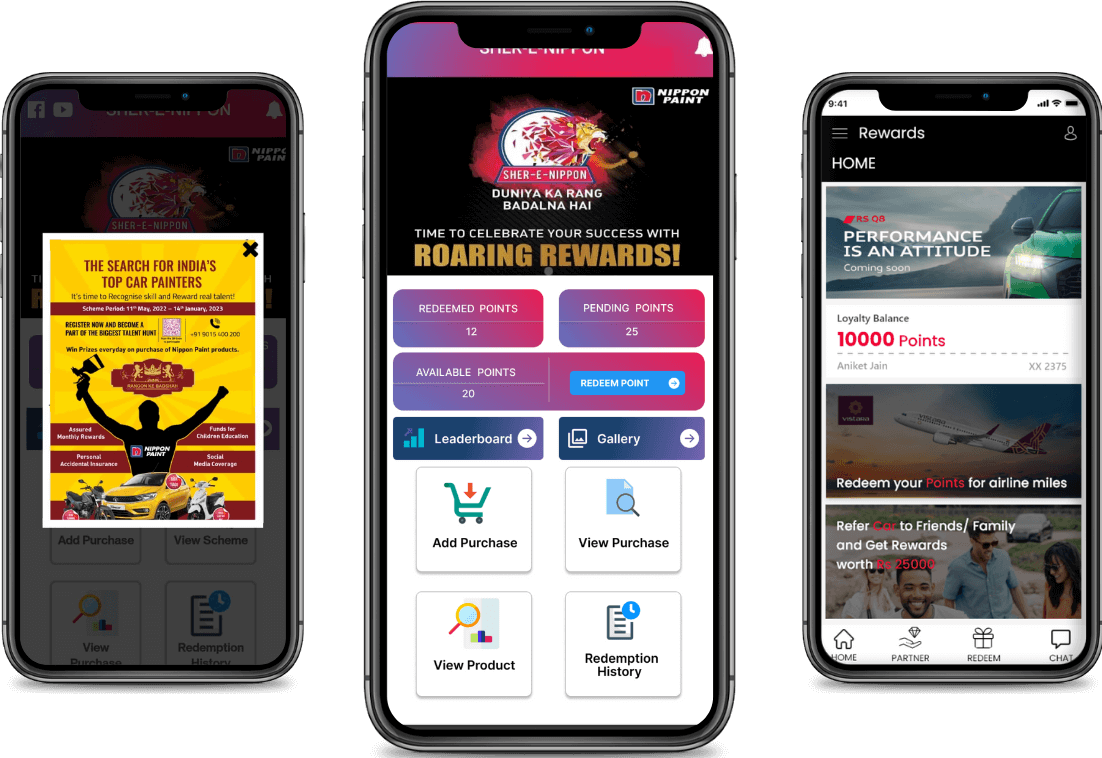80% of your future profits will come from just 20% of your existing customers, according to the business leadership book Leading on the Edge of Chaos by Emmett C. Murphy and Mark A. Murphy.
It is important for brands to build a meaningful emotional bond with customers to generate loyalty. Generating sustained engagement with members requires a deep understanding of consumer behaviour and expectations to effectively respond to their needs at each stage of their journey.
Loyalty programs are structured programs which reward registered members for repeat transactions. A well-designed loyalty program can work to successfully drive engagement, build emotional connection which manifest in increased visits, spend, brand affinity, advocacy, and market share.
Companies thinking to start or modify their Loyalty framework should contemplate 6 key elements:
The six elements are: Easy, Emotive, Valuable, Surprising, Unique, and Evolving.
Let's explore each in turn and understand qualities which make any Loyalty Program successful.
EASY
A top loyalty program is easy to join, easy to understand and easy to engage with.

Easy to join
Surprising, there are still notable retailers who need new members to fill in a paper form to enrol for their loyalty programs. Taking too much personal information on a piece of paper, a cumbersome process wastes time of the newcomer and other customers in the que. These large enrolment forms come with freebies on successful registration, then also a big number of customers (say 45%) end up before completion or don’t even initiate the registration process.
In the standard view, new member’s prime objective is to shop at the retailer’s outlet hence requesting for too much enrolment details (which can also be not much useful, like postal address-when nothing will be mailed) can deviate the purpose of the transaction and impact customer satisfaction. It is expected these details to be captured through a digital form and capture only necessary information (Mobile, E-Mail, Birthday) only, other details could be accessed post registration.
Easy to understand
A customer joining a loyalty program should be able to understand very quickly how the program works. While a program should be simple to join, understand and engage with, that does not mean it can't be complex in design. It just requires educating the customer on the procedure through the first-time registration process. Additionally, larger options for reward and redeem can be segmented into a small number of categories.
Entail the program understandable is to fit it into a framework that the member will recognise; they shop, earn rewards / points and redeem.
Easy to engage with
Some programs demand efforts to claim the benefits in form of uploading pool of information related to previous transactions (date of purchase, invoice details, clear product images, feedback and much more) where they nearly lose customers before showing “CLAIM” button.
A loyalty program is fundamentally created to navigate intense member engagement, so making it difficult does not make sense. It is listless approach, in current digital world, any level of complexity in accessing the benefits is unjustified when customer engagement is prime goal to any business.
Emotive

Loyalty Program members tend to transact 12-18 percent more as compared to non-member customers!
The ultimate ambition and essential foundation of any loyalty program is to develop an emotional connection between the member and the brand. Loyal members that have emotional connections with the brand will continue to purchase over a long period and across various product lines. These members are resistant to discounts and promotions from competitors and often share their positive attitude about the product with others.
The best way to tackle the challenge of garnering brand loyalty is with outstanding program design. While loyalty to a brand is greater than just the loyalty program, it provides the company with the opportunity to understand the member as an individual and provide tailored service and experiences.
For the modern loyalty program designer, this insight is highly profound; a program which serves to make the member feel a sense of exclusivity and belonging will play a significant role in the member adopting the brand (sub consciously or otherwise) as an element of their own self-definition.
Valuable

Of the six elements, valuable is the most important. A member will join a program because of real value perceived by him and stay engaged till the time he is enjoying the benefits provided by the brand.
A disengaged member is worse than a non-member, here in they don’t advocate the associated brands which sequentially hurdles the expansion. Engaged members spreads positive about the brand and creates opportunity for new customers, on the other hand disconnected members tend to stop doing transactions, not giving referrals.
It’s extremely hard to win-back a disengaged member, he may not be interested in talking to brand, already deleted the applications and unsubscribed to the newsletters & promotions. Loyalty programs should be focused on both perceived and actual value given to the members according to their current tier of memberships and same to be marketed to non-members to become a part of the valuable program.
Too many conditions can also disengage the members. The program designed in a way that only a small base of members would be qualified to achieve the milestones or encash the rewards, would tend to fail the entire program leaving no room for reengagement with loyal members.
Surprising

SURPRISE IS THE GREATEST GIFT, WHICH LIFE CAN GRANT US
Boris Pasternak
Several psycho logical studies suggest that when a customer's expectations are met, they will be satisfied and when a customer's expectations are exceeded, they will be slightly more satisfied but when a customer is surprised and delighted their satisfaction levels will be off the charts.
There is evidence to suggest surprise and delight activity can also improve a customer's liking towards a brand. For successful feedback submitted, if the member is surprised with a small amount / reward then they may feel an obligation to transact with the company to reciprocate; a deeply ingrained psychological drive.
Positive surprise and delight experiences elicit pleasure, joy and elation and lead to an increase in customer loyalty. It’s also proved that delight is a positively valanced state reflecting high levels of consumption-based affect and the experience of delight creates a desire for future recurrences of the sensation via the repetition of consumption, which creates loyalty.
The important learning here is the power of surprise and delight. While many companies focus enormous amounts of effort and cost on points or discount programs, they often neglect to take the opportunity to seed the member's experience with small, low-cost delights. As the research shows, if executed well these can be significantly more powerful in generating loyalty than large points balances.
Unique

65% of consumers engage with less than half of the loyalty programs to which they belong. (Code Broker)
The average consumer belongs to 14.8 loyalty programs but is only active in 6.7 of them. (Bond)
Brands offering uniqueness in their products and services gain a competitive advantage, same is applicable to the design of loyalty program. Mimicking the concept of the competitors will just create the disengagement. A differentiated loyalty program provides an occasion to facilitate a discussion with members (which isn't about price) and positively contribute to the value equation in a way that conventional discounting can't do.
In an industry where everyone rushes to the same space, the opportunity arises for a competitor to gain market share by doing something completely different.
Evolving

Change is inevitable. Change is constant.
Benjamin Disraeli
Designing, launching, running the programs but not changing them can lead to failure.
It is a classic 'do it big, but do it once, approach which ignores the modern principles of focussing on the members’ present demands and meet their definition of contemporary values.
Modern programs must include customer feedback which provides the insights and analytics to evolve the program smartly and meeting the demands of members. It is suggested to modify the framework every one to two years and achieving the highest level of customer engagement and experience. Any change can be started as a trial, if successful, the enhancements can quickly expand to the entire customer base.
Related Blogs
